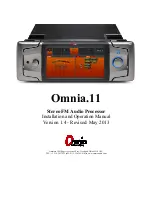
Backbone Planning
4-15
Network Design
•
Limited Control - The use of a distributed backbone makes the isolation of
workgroups from the rest of the overall network somewhat time-consuming.
If a workgroup in a distributed backbone needs to be disconnected from the
other networks physically, for whatever reason, the distributed backbone
requires that a Network Manager go out to the physical location of the
workgroup network and disconnect the required cables, making any additions
or changes necessary to keep the backbone network whole and operating.
The Collapsed Backbone
It is also possible to run cables from a central point, often a network management
office or central wiring closet, out to each workgroup network and back. These
cabling runs are then terminated at a central point such as a patch panel. The
patch panel ports for each of the cable runs can then be connected to one another
using jumper cables. In this fashion, provided that no technology restrictions are
exceeded, chains and rings of workgroup networks can be created.
Figure 4-7. Collapsed Backbone
Having the individual cable runs of the backbone connected to one another at a
single point can make this configuration more expensive than the distributed
backbone, but the added configuration and control options provided by the
collapsed backbone often outweighs the associated costs.
•
Connectivity Requirements - The collapsed backbone implementation brings
all cables of the backbone to a central point, and the requirements of the Token
Ring and FDDI technologies for an unbroken ring still apply.
hub
hub
hub
hub
Cross-Connected
Patch Panel
1706n17
Summary of Contents for MMAC-5FNB
Page 1: ...Cabletron Systems Networking Guide MMAC FNB Solutions ...
Page 2: ......
Page 4: ...ii ...
Page 10: ...viii ...
Page 188: ...Expansion Ethernet 8 12 Port Assignment and Virtual LANs ...
Page 194: ...Expansion Token Ring 9 6 Port Assignment ...
















































